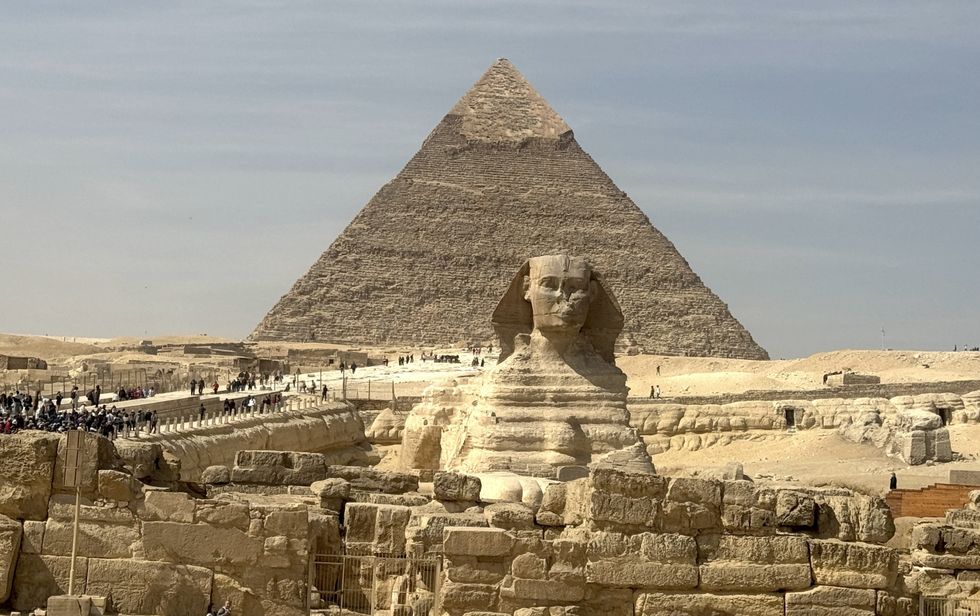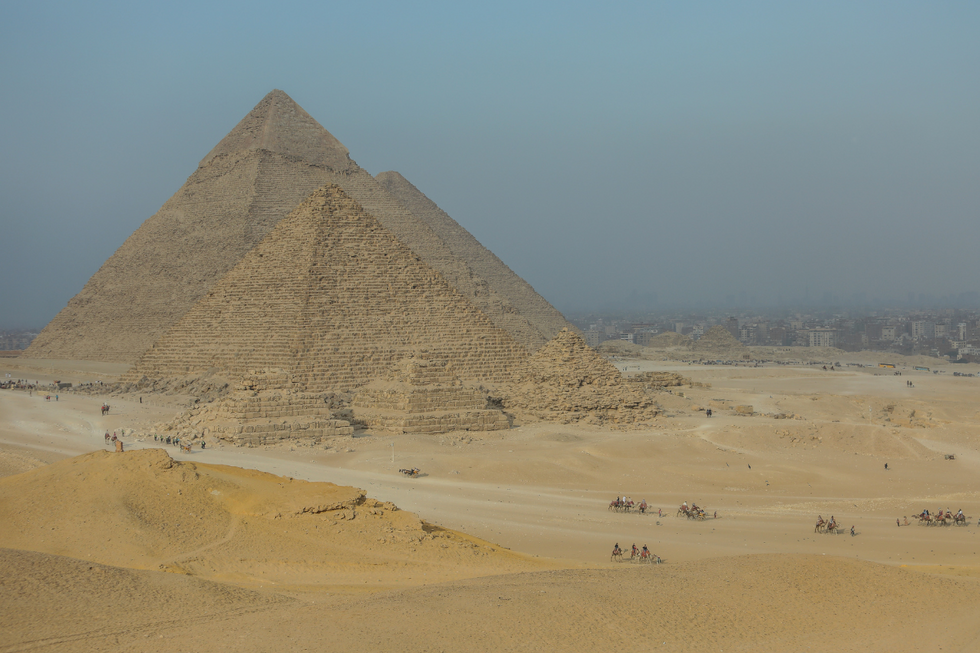Experts discovered the hidden civilisation last month
Don't Miss
Most Read
Trending on GB News
A team of Italian and Scottish archaeologists has made a controversial claim that a "lost city" beneath the Giza pyramids could be thousands of years older than experts originally believed.
If true, their findings could dramatically transform human understanding of ancient civilisations and history.
Now, the researchers have asserted that the Giza pyramids in Egypt are approximately 38,000 years old - not 4,500 years old as widely claimed.
This bombshell revelation comes alongside claims that they have discovered a "lost city" beneath the famous landmarks, having deployed radar technology to identify "an entire hidden world of many structures" 4,000 feet beneath the pyramids.

Experts discovered the hidden civilisation last month (Stock)
GETTY
They have claimed to have discovered intricate, complex networks more than a kilometre below ground, including huge vertical columns with spiral stairs, a water system and connecting corridors.
Dr Mei, who visited the site two weeks ago, leads the research group that first announced these findings last month.
The researchers describe cylindrical structures stretching thousands of feet underground, containing what they believe to be an elaborate water system with pipelines and chambers.
According to their theory, the people who built the pyramids were destroyed around 12,000 years ago by a "divine flood" triggered by an asteroid impact.
LATEST DEVELOPMENT:
The archaeologists have suggested the pyramids were the only "megastructure" to survive this extinction event, meaning that the Giza complex predates Göbekli Tepe, currently recognised as the oldest known man-made structure.
The researchers have argued that traditional theories about pyramid construction require a more plausible explanation.
"Some blocks near the Great Pyramid's entrance show clear signs of water erosion," Mei told the Daily Mail. "Only certain stones are affected, suggesting part of the pyramid was submerged in ancient times."
The researcher also noted thick salt encrusting found inside the Great Pyramid, which he has interpreted as further proof that the structure was once submerged in a huge oceanic flood.

The researcher also noted thick salt encrusting found inside the Great Pyramid (Stock)
GETTY
Zahi Hawass, Egypt's former Minister of Antiquities, has dismissed the evidence of "water erosion" as simply the result of natural weathering.
But he has also directly countered the research methods used by the team, saying that "the claim of using radar inside the pyramid is false, and the techniques employed are neither scientifically approved nor validated".
Many voices in the scientific community have contested these revelations, with some dismissing them as "fake news", including Professor Lawrence Conyers who has described the claims as "outlandish".
Although the study has not yet been peer-reviewed, Mei has maintained that the "enigma of the Giza pyramids stands as a powerful and perplexing testament to this possibility".








